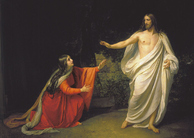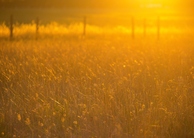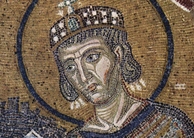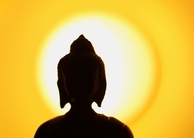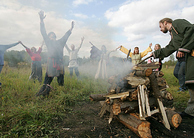Biblical Allusions in "The House of Fame"
By
2009, Vol. 1 No. 12 | pg. 1/1
KEYWORDS:
In Book II of “The House of Fame,” the narrator states that his dream is of greater significance than the biblical visions of “Isaye,…kyng Nabugodonosor, [and] Pharoa” (514-5). Beginning with line 480, “The House of Fame” includes descriptions of an eagle that transports the main character, a great being adorned with precious metals, and a large field lacking cultivation or creature. Though these descriptions may appear to be unrelated in their roles in the story, they possess one common factor: they refer to a biblical dream by either similarities or differences. By mentioning the dreams and visions of these three biblical characters Isaiah, Nebuchadnezzar, and Pharaoh, Chaucer creates a list of biblical allusions in “The House of Fame.” In Isaiah’s vision, “those who wait on the Lord” will have their strength renewed; they will be lifted up on “wings like eagles, They shall run and not be weary, They shall walk and not faint” (Isaiah 40:31 New King James Version). In “The House of Fame,” the narrator’s experience points to similarities with the eagle image. Where Isaiah mentions strength being renewed to those who “wait on the Lord,” the narrator is snatched up involuntarily by the eagle before he can run, an event that is supposed to strengthen and, instead, results in the narrator’s feeling weak (Isaiah 40:31). While Isaiah refers to the eagle as spiritually affecting people by giving them the strength to continue, in “The House of Fame,” the eagle physically affects the narrator by moving “the protagonist forward as the force of plot” (Jeffrey 215). What spiritual movement is made is not reliant on a divine or other physical force but of Geffrey’s “own will and perspective” (Jeffrey 215). The description of Lady Fame shares many similarities with Nebuchadnezzar’s dream. In Geffrey’s dream, he sees a woman of great height with “heer, that oundy was and crips, As burned gold hyt shoon to see” and adorning this goddess was a great abundance of “perry and…richesse” (1386-94). In Nebuchadnezzar’s dream, the king witnesses a similar sight “whose splendor was excellent” and its “head was of fine gold,” the remainder of its body being: “chest and arms of silver…belly and thighs of bronze, legs of iron, [and]…feet partly of iron and partly of clay” (Daniel 2:31-33).Pharaoh’s dream begins with him standing by the river Nile; (“Then it came to pass…that Pharaoh had a dream; and behold, he stood by the river”) (Genesis 41:1). When Geffrey’s dream begins with a similar panoramic description, but of a field of sand, he appears to be surprised that the scene is devoid of “bush…or grass…[or] creature” (485-9) as if he expects to see the seven fat and lean cows and seven plump and thin heads of grain of Pharoah’s dream. The mention of “Lybye” seems to point further to the two dreams as polar opposites (488), Geffrey’s dream lacking exactly every element of Genesis 41:1-7 in a way that alludes to Pharaoh’s vision. While Pharaoh sees himself on the banks of the river Nile, the river that fertilizes the land of Egypt, Geffrey describes the desert-like climate of the neighboring country Libya, where the boundary between Egypt and Libya is determined by the extent of land fertilized by the Nile and the beginning of the desert. From the exactly differing of Pharaoh’s and Geffrey’s dreams to the eagle images in Isaiah 40:31 and “The House of Fame” to the golden-headed images of Lady Fame and the statue, the scenes described in “The House of Fame” are related to biblical visions by either similarities or differences. Similar to “those who wait on the Lord,” Geffrey is lifted up on eagle’s wings, yet he is not strengthened by this but weakened. The descriptions of Lady Fame with curly hair of gold and adorned with gems and precious metals refer to the great image of Nebuchadnezzar’s dream. Geffrey specifically mentions while describing the significant panoramic scene that there is no “bush…or grass… [or] creature” (485-9) – what all exists in Pharaoh’s dream. Chaucer’s mentioning of these dreamers in the Proem of Book II – “Isaye,…kyng Nabugodonosor, [and] Pharoa” (514-5) – serve as a list of biblical allusions in “The House of Fame.” Chaucer, Geoffrey. The Riverside Chaucer. Eds. Larry D. Benson and F.N. Robinson. New York: Houghton Mifflin Company, 1987. Jeffrey, David L. “Sacred and Secular Scripture: Authority and Interpretation in The House of Fame.” Chaucer and Scriptural Tradition. Ed. David L. Jeffrey. San Marino: University of Ottawa Press, 1984. The Holy Bible: New King James Version. Nashville, TN: Thomas Nelson Bibles, 1982. Suggested Reading from Inquiries Journal
Inquiries Journal provides undergraduate and graduate students around the world a platform for the wide dissemination of academic work over a range of core disciplines. Representing the work of students from hundreds of institutions around the globe, Inquiries Journal's large database of academic articles is completely free. Learn more | Blog | Submit Latest in Theology |










